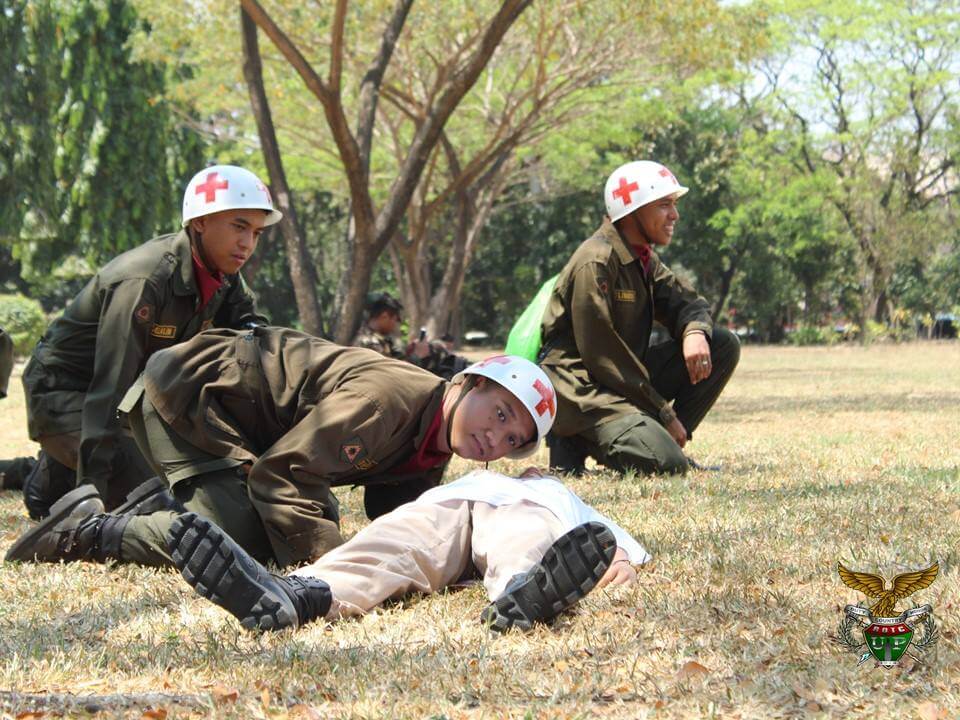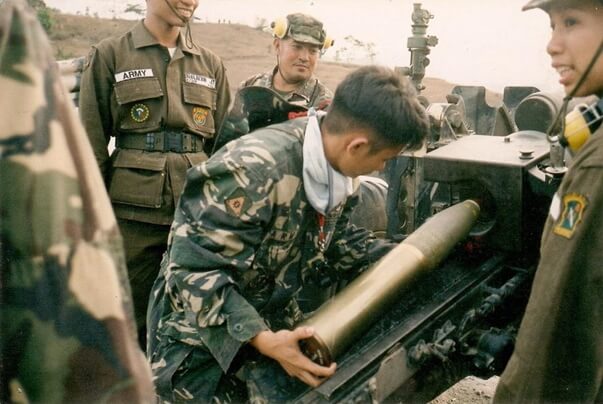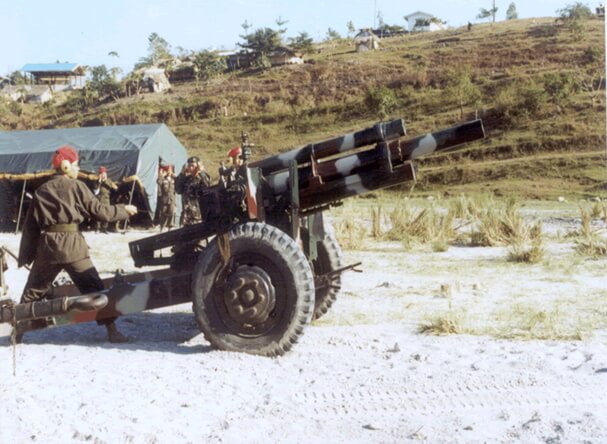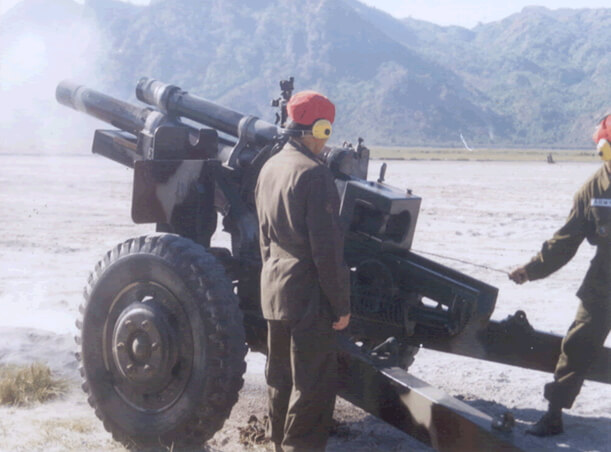Basic ROTC focuses on equipping its graduates with the five fundamental skills of LEAD, SHOOT, MOVE, NAVIGATE, and COMMUNICATE. These five skills are embedded in lectures and training held under the two Military Science courses to be taken under Basic ROTC: Military Science 1 and Military Science 2.
Throughout the Corps Year, while training to acquire the competencies mentioned above, Basic Cadets will be able to participate in activities such as Camp Visits, Sportfest, and Cadet’s Ball. Such activities boost morale and strengthen camaraderie of cadets. Another activity is the Regional Annual Administrative and Tactical Inspection (RAATI), this gives the cadets the chance to represent the University in an annual competition amongst ROTC Units in the region through UP ROTC, the Best Corps.
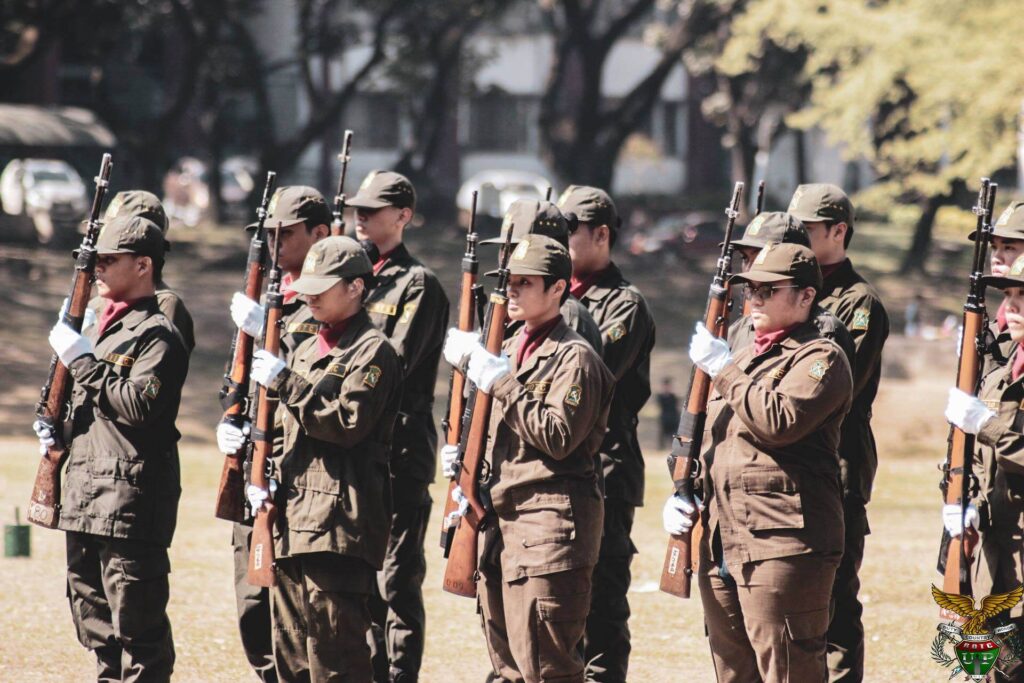
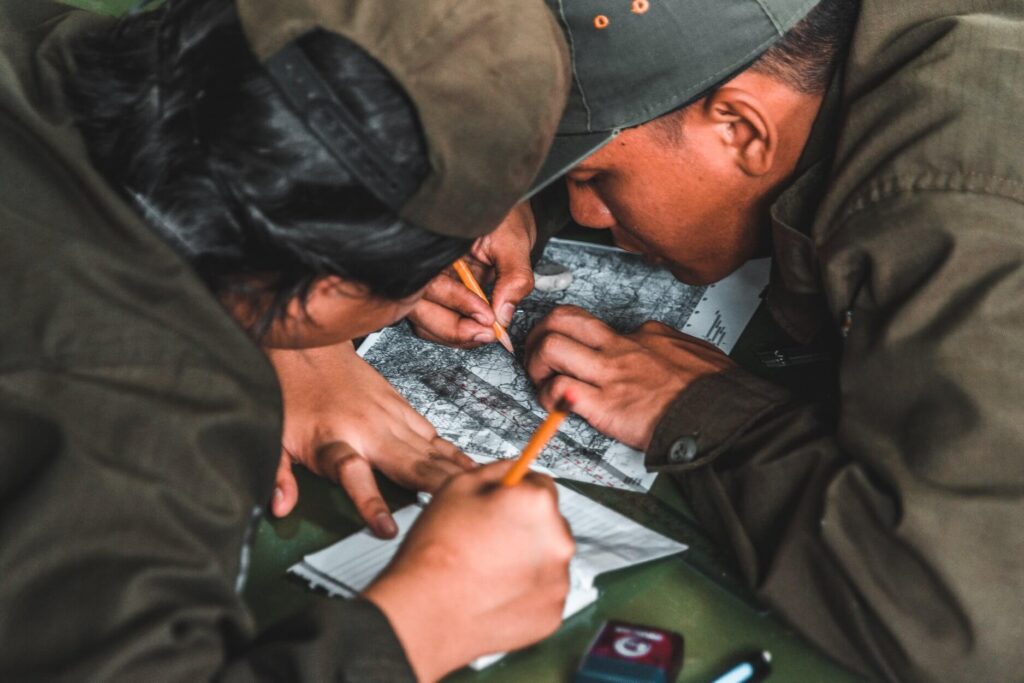
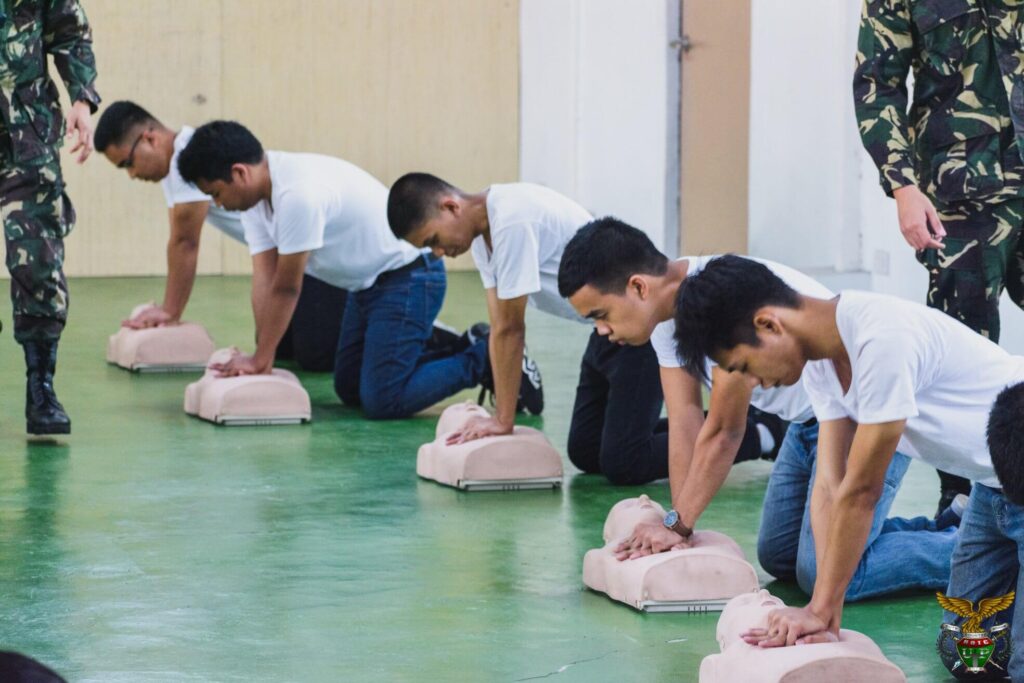
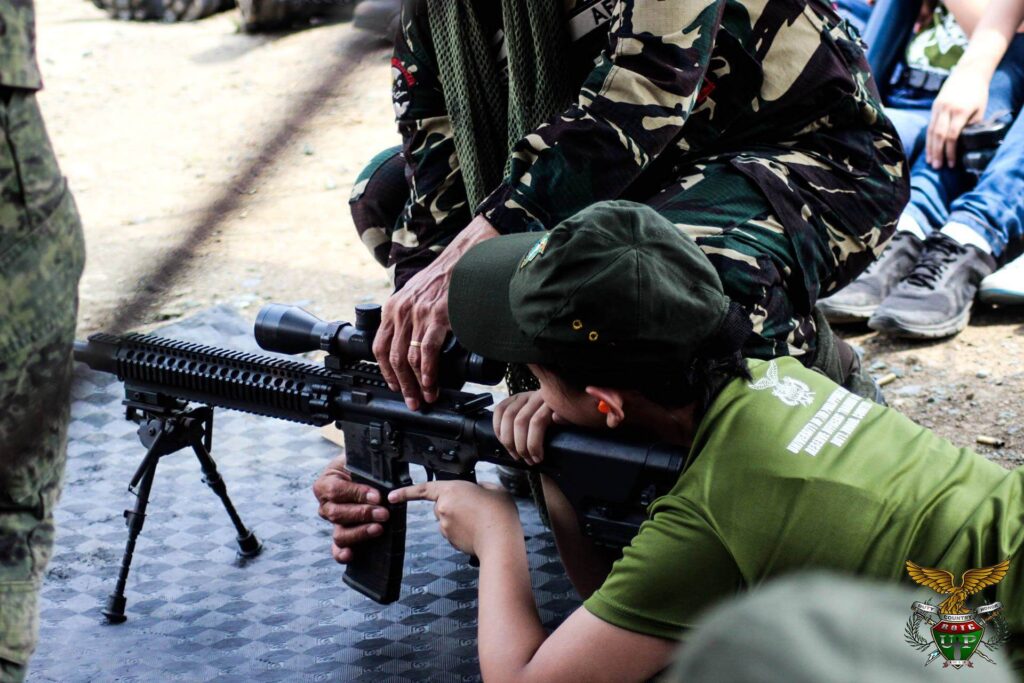
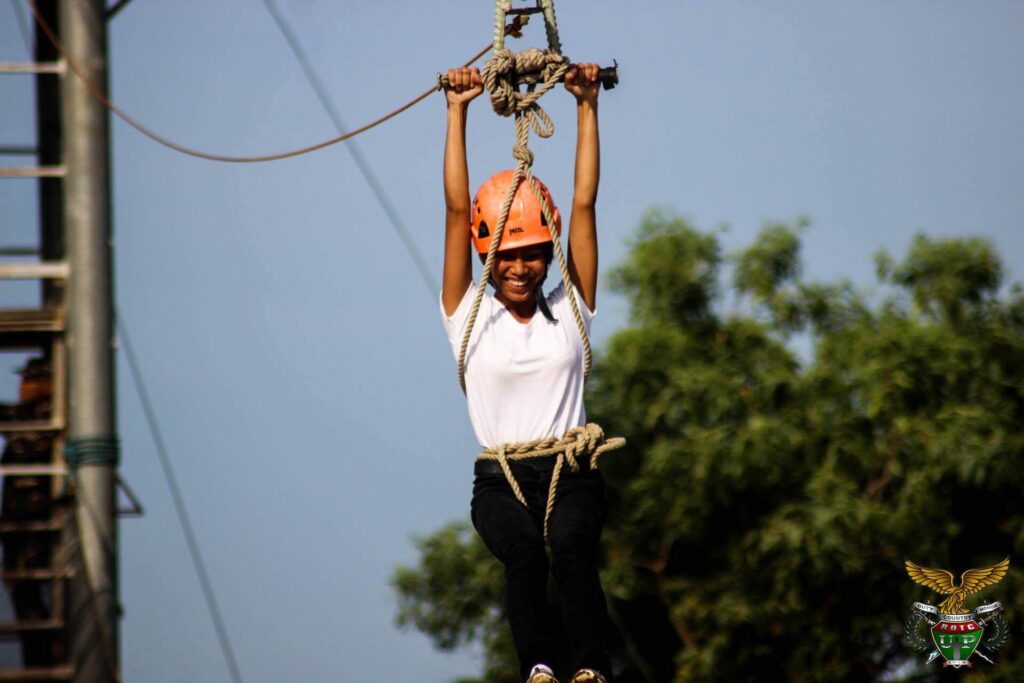
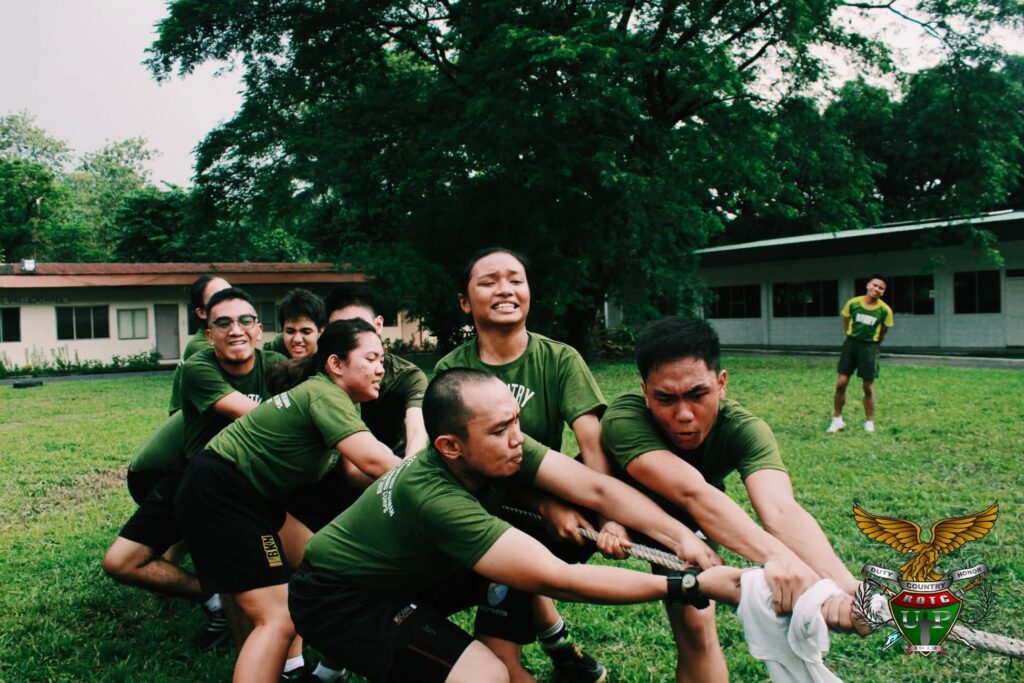
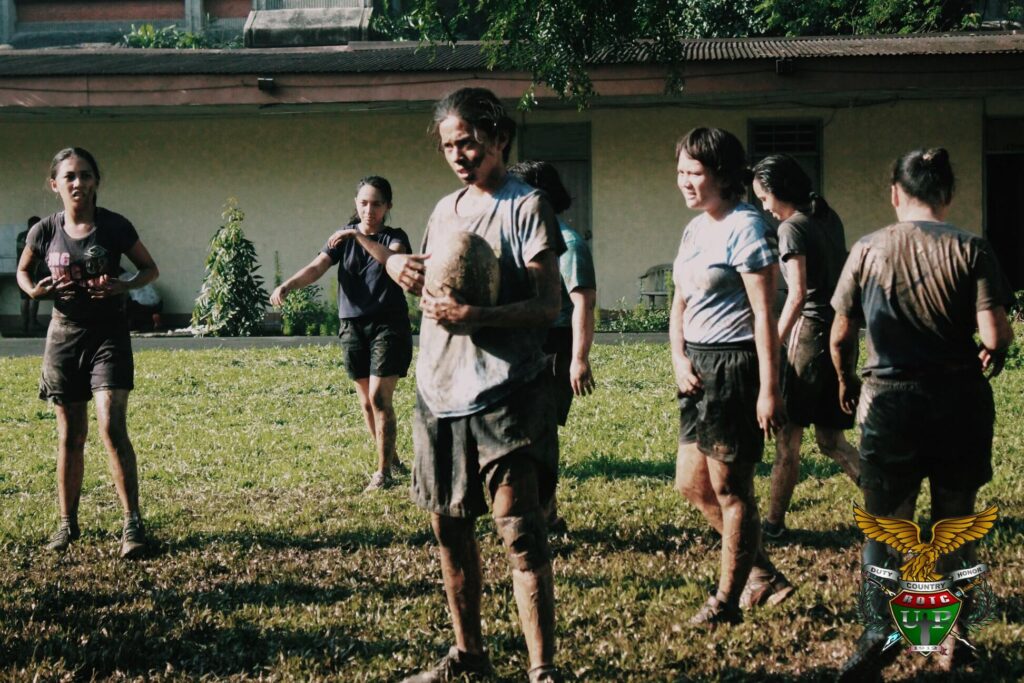
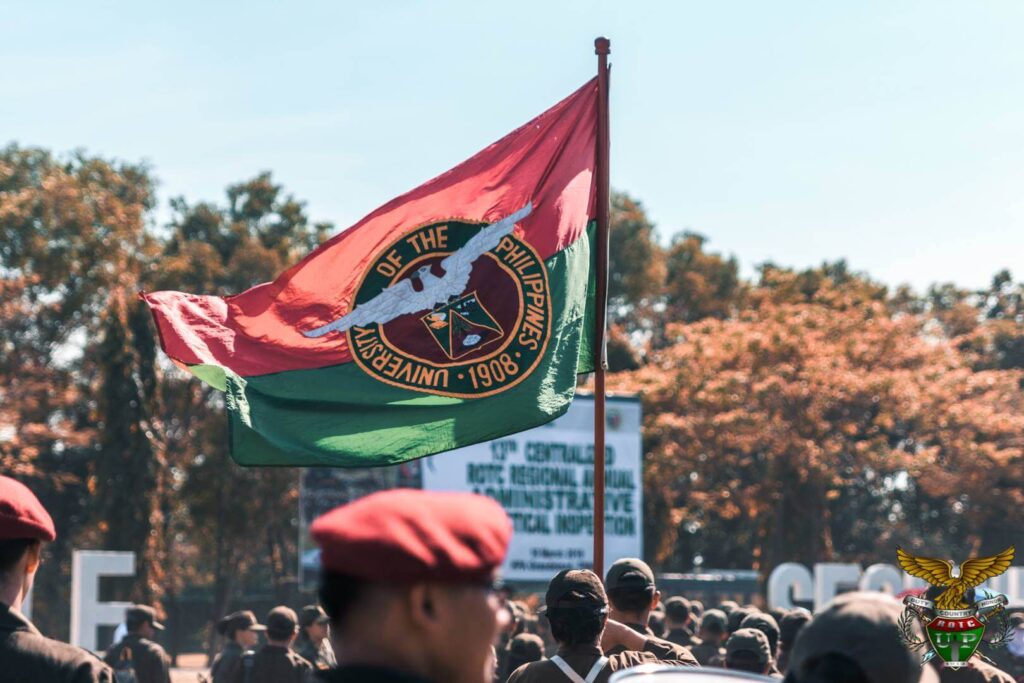
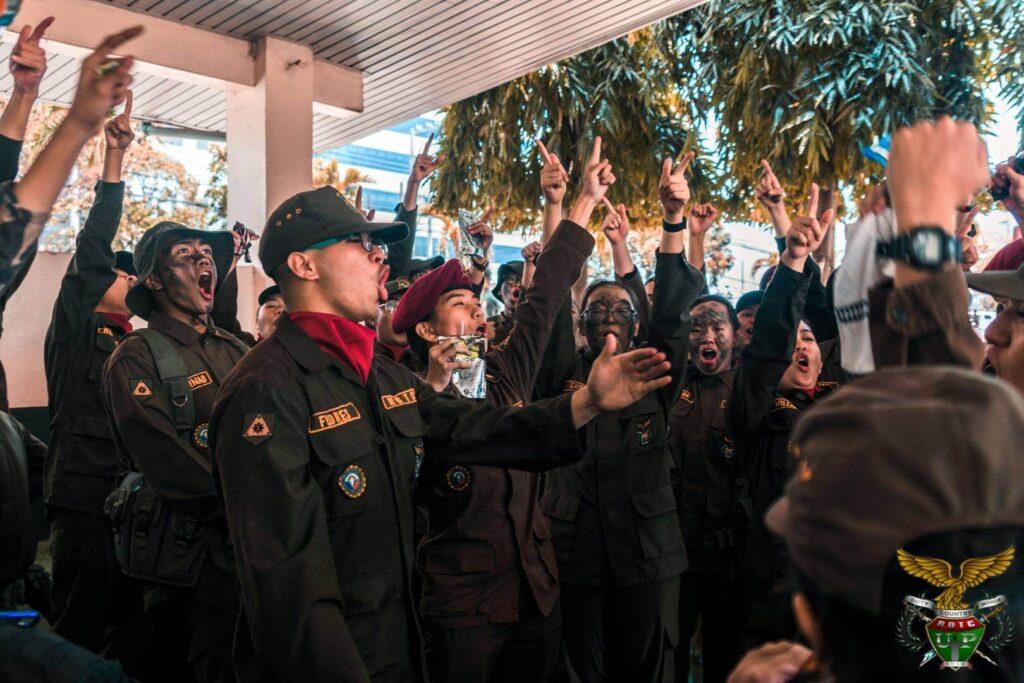
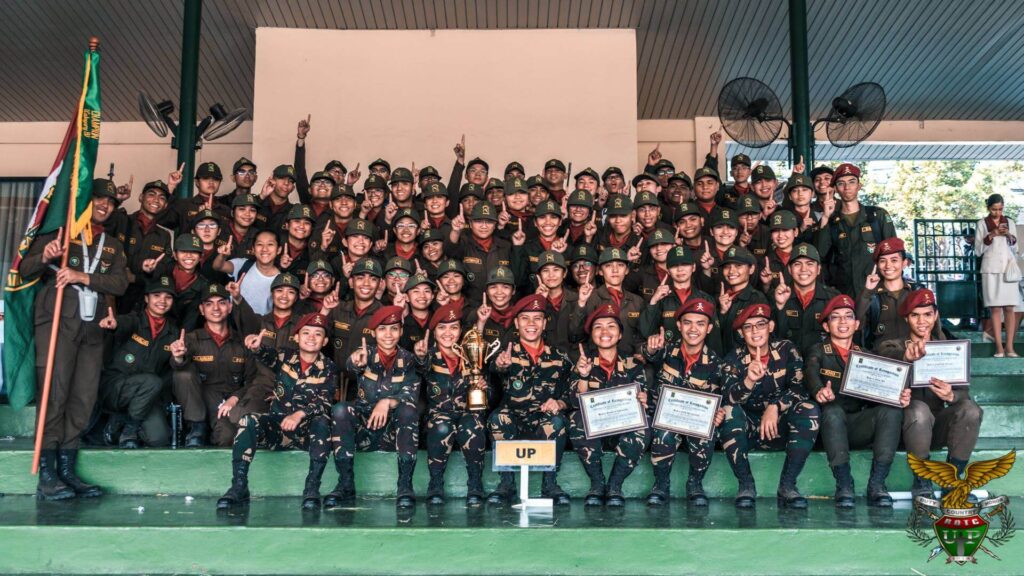
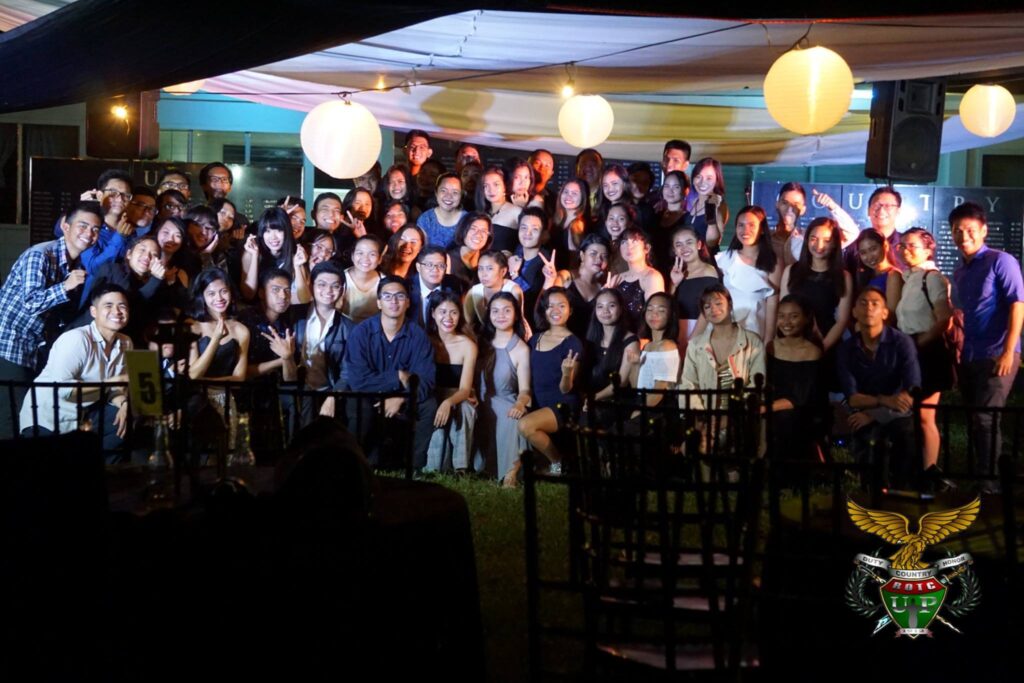
UP Diliman ROTC Units
Rayadillo

The UP ROTC was in line for a major change in the form of the addition of the Rayadillo into their ranks. While there was already a model company existing in the ROTC since it began, the Rayadillo became UP ROTC’s distinction as an ROTC unit.
The call for a special “model unit” came from the office of the President of UP upon his ascent into office, who was then the famous diplomat and statesman, General Carlos P. Romulo. General Romulo felt that there was a need for an elite group of men. This would be a unit with the capability of executing a “military reception” for visiting and local dignitaries with all the characteristic “pageantry”, “glamor”, and military discipline.
A committee was formed to deliberate on the possibilities and relevance of creating such a unit. Those called into the historic meeting with Romulo were Ms. Iluminada Panlilio, the University Secretary; the acting UP ROTC Commandant, General Armurfo Banez (who was Captain at the time) and the tactical officer, Vanguard David Madrid. No sooner than it was approved, the task was quickly and vigorously undertaken. Within the second semester of SY 1962-1963, the task was fully accomplished and a special unit was born.; the UP Rayadillo “Honor Guard” Battalion.
The name “Rayadillo” was adopted because of its historical significance. It was the name given to the Elite Presidential Guards of President Aguinaldo during the Philippine Revolution of 1896, because of the blue cloth of their uniform which was uniquely pinstripe. To accurately and wholly give honor to those men of the Elite Guards, the present uniform of the Rayadillo was strictly patterned after the original paraphernalia, to the use of four types of headgears; the “demonito salakot”, the “buri” hat, the guinet cap, and the “upo-salakot”. Therefore, the “nationalization” process on-going today in UP may actually be attributed to the early dream and accomplishment of Romulo of a “Filipino” (in all aspects) model company.
General Romulo founded a legacy in the military through the introduction of the use of Tagalog commands during drills. This adoption of Tagalog commands was quickly followed by the Philippine Constabulary, and later on by the Armed Forces of the Philippines as a whole. The Rayadillo was even more honored with the creation of the musical composition of the “Rayadillo March” to be played by the band during pageants. Finally, everything was set and Rayadillo was ready to make its mark in Philippine History.

The Rayadillo was inaugurated on 18 August 1962 during the Presentation of Sponsors of the Board of Regents. Since that time, the Rayadillo has performed to the delight of several dignitaries, fellow students, and countrymen alike. Exhibitions ranging from parades for the President and the Vice President of the University of the Philippines, the Board of Regents, for the Philippines Congress and for the reception of the President of Mexico, President Suharto of Indonesia and Prince Akihito from Japan. Because of their military precision, the Rayadillo was justifiably regarded as the “Honor Company” of the Metropolitan Citizen Military Training Command in Fort Bonifacio. Thus, proving that through time, the pursuit of honor, discipline, and excellence has never waned, for these attributes are at the heart of every proud member of the elite group of men called the “Rayadillo”.
To wear the Rayadillo uniform is a prestige earned as the Unit trains its cadets well in performing drills and ceremonies. Today, the Rayadillo Unit is still frequently tapped to represent the UP ROTC and provide military honors both inside and outside the University, earning them two (2) free PE Units per semester of training.
Join the prestigious Honor Guard unit – the best unit!
“HAIL RAYA!”
Infantry

The Infantry Unit is known for specializing in land-based, foot soldier type of training.
Each Infantry cadet is trained to master individual soldier combat training skills. The Unit conducts training of individual and small unit tactics for jungle-based and urban-based military operations, which includes Individual and Squad Movement Techniques. Cadets are trained in different patrolling techniques such as conducting raids, ambushes, and handling compromise situations.
Infantry cadets are also trained in handling weapons such as M16A1 Rifle and Cal .45 Pistol. Infantry cadets are selected to compete in the Limited Warfighting stake in RAATI, which includes Improvised Explosive Device (IED) Identification, Mortar Gunnery, Endurance Firing, Sniping (M14 Rifle), and Hostage Taking.
Close Quarter Combat (CQB) is also one of the specializations of the Infantry Unit. CQB is done to raid installations and buildings. The standard operating procedures of CQB apply when the scenario of the mission is in an urban area.
The highlight of the Infantry unit training is the Combat Lifesaving (CLS). This is a specialized training conducted by the Armed Forces of the Philippines aiming to lessen casualty during combat by deploying Combat Lifesavers to administer first-aid to injured troops. Combat Lifesaving is different from Basic Lifesaving and BERC because CLS is done during combat, meaning the responder will be under fire. Currently, the Corps of Cadets have four (4) certified Combat Lifesavers.
The Infantry Unit is called the UP Blackhawks. The Blackhawks stages field training exercises (FTX) around the Campus to apply small unit tactics, signal communication, and survival.
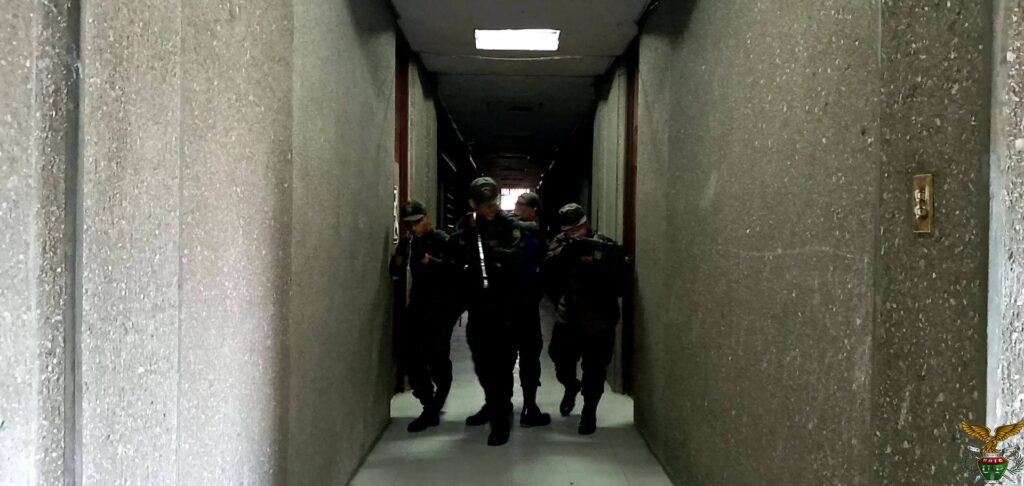
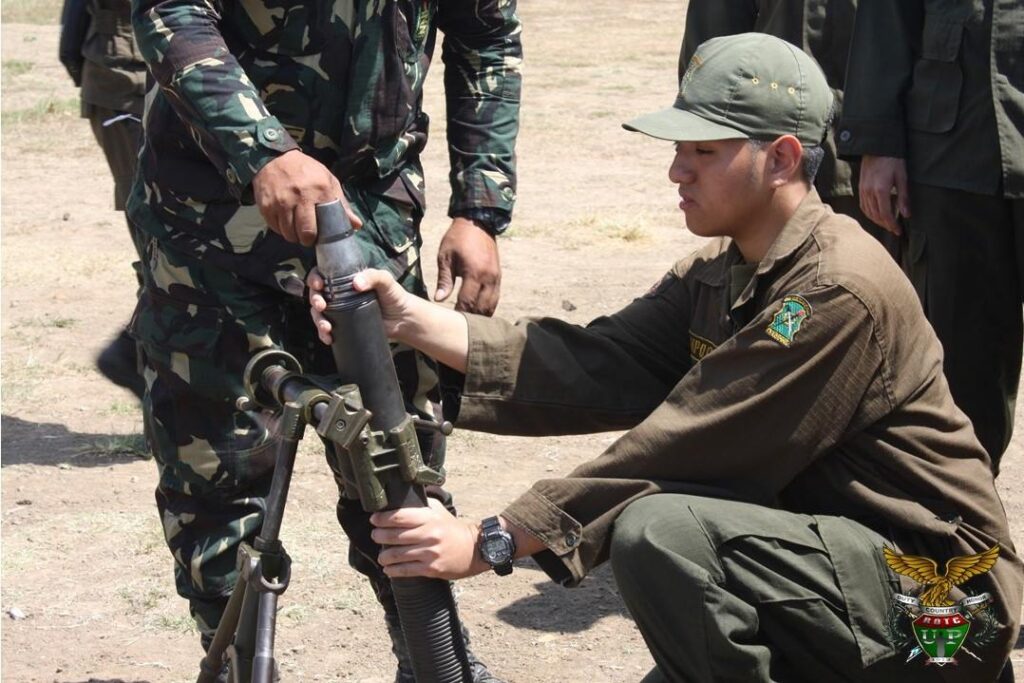
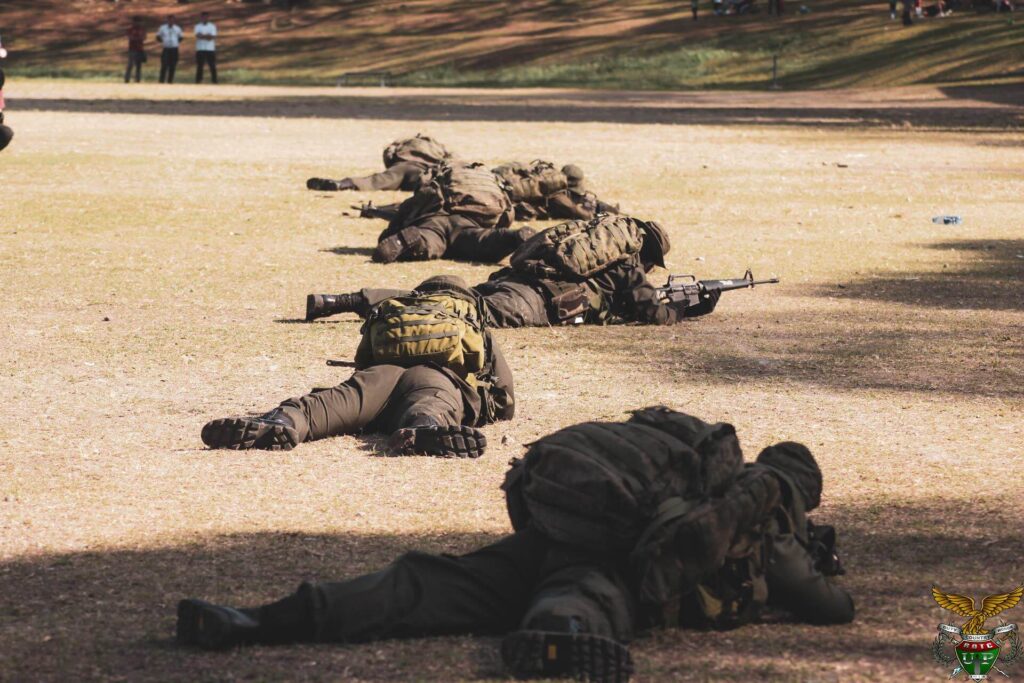
Do you want to be part of the UP Blackhawks? Enlist in the Infantry unit and be ready to HUNT THEM, TAKE THEM DOWN!
Rescue

The Rescue Unit is trained to save and preserve lives. They are cadets who specialize in disaster risk reduction and management, which equips them knowledge in handling and responding to disasters and crisis situations.
The Unit trains its cadets to be proficient in Basic Life Saving, disaster risk reduction and management, and humanitarian assistance and disaster response management (HADR) which truly builds them as lifesavers.
The specialization training of the Rescue Unit includes High Angle Rescue where the cadets will be trained to handle ropes and master knot tying. Then, the highlight of the High Angle Rescue is the Rappelling. The UP ROTC has its own Rappelling tower (located at the west side of the Vanguard Building) which is utilized specifically by Rescue cadets during this training.
Another specialization training the Rescue unit undergoes is the Water Training composed of Basic Swimming, Drownproofing, and Rescue Swimming.
The Rescue Unit can also get a Basic Emergency Responder Course, a more in-depth training in emergency response. The training is usually given by MMDA. BERC is composed of lectures and practicals on Basic Trauma Emergencies (covering Body Substance Isolation, Musculo-Skeletal and Soft-Tissue Injuries, Bandaging and Splinting, Bleeding and Shock, and Patient Assessment), Basic Life Support (adult and infant), Foreign Body Airway Obstruction, Lifting and Moving, and Mass Casualty Incidents (MCI).
Enlist now and be a part of the Rescue Unit; because in Rescue, “SAVING LIVES IS WHAT WE DO!”
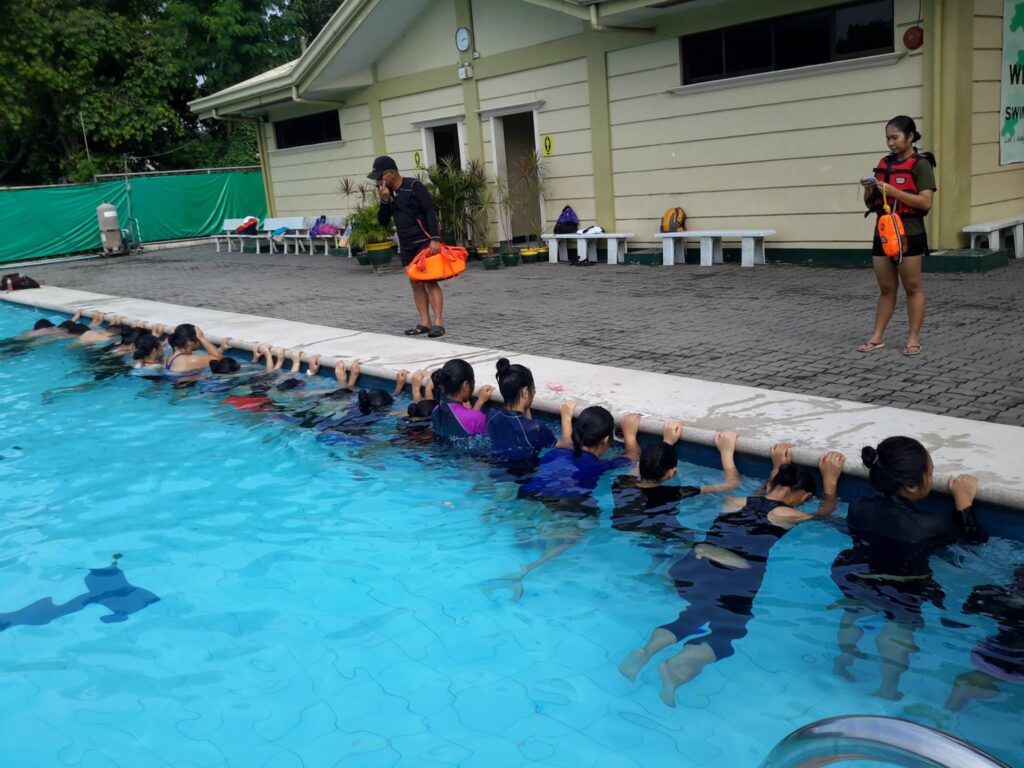

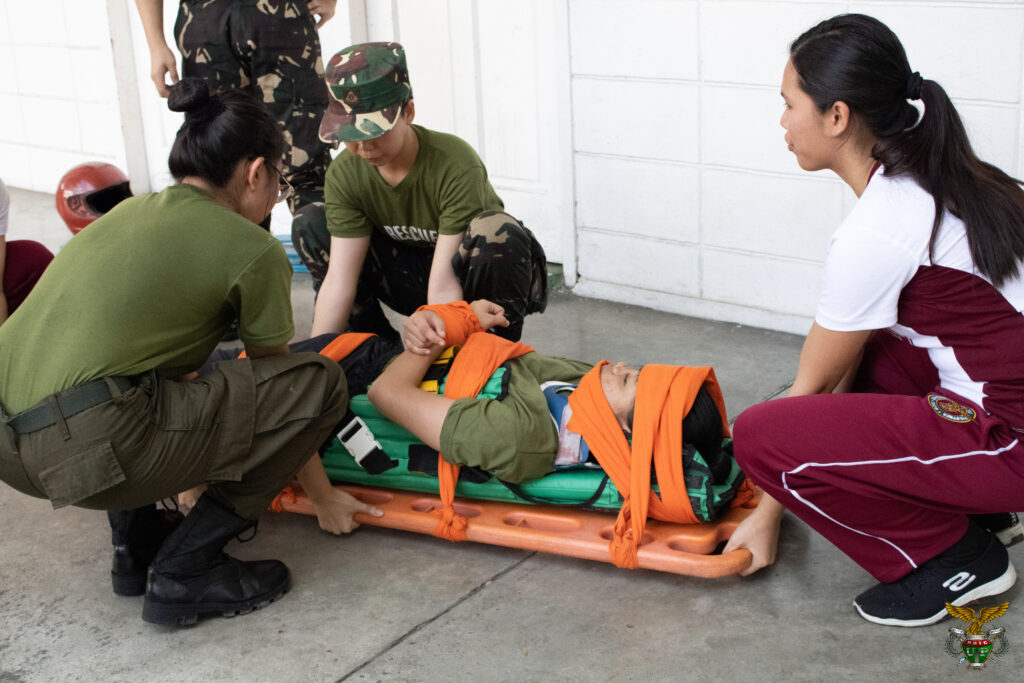
Field Artillery

The UP Field Artillery (FA) or the “Battery”, as it is also known, takes pride in being the only established unit of its kind among all other ROTC Units in the country. It has been the special unit of the Corps which made a distinction for UPROTC. Its inception can be traced back in the pre-war period and has withstood the test of times up to this day.
The Field Artillery Unit was established on October 26, 1929 with the issuance of the 75mm field guns. In 1935, a mounted battery unit was organized equipped with 2.95 inch guns. When World War II broke out in December 1941, members of the unit volunteered to man actual Artillery units to fight alongside regular soldiers. They would become known as the “ROTC Battery.”
The year of early 2000 saw action-packed training for the cadets. Bewildered with the abolition of the ROTC movement due to the death of UST Cadet Mark Chua for exposing alleged corruption in UST ROTC, the Field Artillery Battalion was instrumental in showing everyone that UP offers quality training. Even though ROTC was made optional, more than a thousand students still enrolled to become cadets and many of them were enticed to enlist under the Great FA Battalion due to the one of a kind experiences of training with actual howitzers. They were proud to be in UP, prouder to be in the ROTC and proudest to be in the Field Artillery.
The training was primarily centered on the concept of the FA Gunnery Team (Also known as Fire Support Gunnery Team). Understanding the crucial role of Combat Support and Mastery of the Forward Observer Procedures, Fire Direction Center and Firing Battery Operations prepared the FA cadets in conducting Fire Missions as their culminating activity at the end of the training year. These are held on known Fire Bases like the Crow Valley Tactical Gunnery Range near Camp O’Donnell Capas, Tarlac and at Fort Magsaysay Laur, Nueva Ecija. The Office of the Army Chief Artillery was instrumental in the conduct of the training for providing competent instructors and field officers and of course, the artillery pieces, ammunition (both live and blank rounds) and logistics needed in the training.
Precision and accuracy have been the trademarks of the Field Artillery Battalion; whether it be landing fires on targets in Field Training Exercises or synchronizing the first and the last round of the gun salute with the first and last note of the ruffles that the band plays during arrival honors. Thus, it has the distinction of being the Five-time recipient of the much-coveted Best Battalion “Kampilan Sword” award of the UP Corps of Cadets – more than any Battalion has ever achieved. Carrying the title “Rex Belli,” the Field Artillery continues to live up as the King of Battle.
The Field Artillery Unit has been recently revived after years of inactivity; join the Field Artillery unit and once again, light up the passion of the gunnermen wearing the fierce red beret and the bold black gloves roaring:
“WE ARE THE BATTERY, WE ARE THE BEST!”
Program of Instructions
References
- UP ROTC. (2019, July 4). Enlist NSTP ROTC 1 – RAYA NOW and get FREE UNITS OF P.E.! [Facebook Post]. Retrieved from https://www.facebook.com/uprotc/posts/10157306878004931
- UP ROTC. (2019, July 4). Enlist in NSTP ROTC 1 – INF now! [Facebook Post]. Retrieved from https://www.facebook.com/uprotc/posts/10157306881679931
- UP ROTC. (2019, July 4). Enlist NSTP ROTC 1 – RES now! [Facebook Post]. Retrieved from https://www.facebook.com/uprotc/posts/10157307776519931
- UP ROTC. (2019, July 4). Enlist in NSTP ROTC 1 – FA now! [Facebook Post]. Retrieved from https://www.facebook.com/uprotc/posts/10157306879994931







